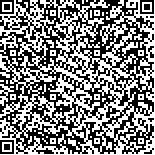| 摘要: |
| [摘要] 心力衰竭(简称心衰)患者常合并左束支传导阻滞(LBBB),根据病理生理过程:LBBB发生在前,随后引起心脏扩大和心衰的类型称为“LBBB导致心衰”;而心肌病变在前,随后合并出现LBBB的类型称为“心衰导致LBBB”。对于前一类心衰患者,心脏再同步化治疗(CRT)纠正心脏电传导不同步后可以逆转机械不同步和结构重构,CRT反应好;而对于后一类心衰患者,CRT即使纠正电传导不同步也无法改善心肌病变,CRT反应差。心脏磁共振(CMR)组织追踪成像可识别出“LBBB导致心衰”患者独特的间隔壁反常运动和收缩功能保留的左室侧壁,“心衰导致LBBB”患者则表现为广泛的心肌运动障碍。对于病史无法明确的患者,如果左心室舒张末期侧壁/间隔壁厚度比值为0.93以上且左心室侧壁增厚率>21%时,可归类为“LBBB导致心衰”,相反则为“心衰导致LBBB”。CMR可为CRT反应提供预测价值并为临床选择适合CRT的心衰患者提供重要依据。 |
| 关键词: 左束支传导阻滞 心力衰竭 心脏磁共振 心脏再同步化治疗 |
| DOI:10.3969/j.issn.1674-3806.2021.06.03 |
| 分类号:R 541.6 |
| 基金项目: |
|
| Pathophysiological mechanism of heart failure complicated with left bundle branch block and cardiac magnetic resonance analysis |
|
CHANG San-shuai, DONG Jian-zeng
|
|
Center of Cardiology, Beijing Anzhen Hospital, Capital Medical University, Beijing 100029, China
|
| Abstract: |
| [Abstract] Left bundle branch block(LBBB) is a common complication in patients with heart failure(HF). According to the pathophysiological process, if LBBB develops first and gradually induces left ventricle(LV) remodeling and hemodynamic deterioration, this type of HF is considered as “LBBB inducing HF”; if HF develops first, and then a subsequent complication of LBBB occurs, this type of HF is considered as “HF inducing LBBB”. For the former type of HF patients, after the LV activation sequence corrected by cardiac resynchronization therapy(CRT), the mechanical dyssynchrony and cardiac remodeling can be reversed and the patients will have good response to CRT; while for the latter type of HF patients, even though the activation sequence is corrected by CRT, underlying cardiomyopathy cannot be resolved and therefore it is likely that the patients will not respond to CRT. Cardiac magnetic resonance(CMR) tissue tracking can identify the unique abnormal movement of the septal wall and the preserved systolic function of left ventricular lateral wall in patients with “LBBB inducing HF”, while extensive myocardial dyskinesia can be recognized in patients with “HF inducing LBBB”. For patients with unclear medical history, if the left ventricular end-diastolic lateral wall/septal wall thickness ratio is greater than 0.93 and the left ventricular lateral wall thickening rate is greater than 21%, the patients can be considered as “LBBB inducing HF ”, on the contrary, the patients are considered as “ HF inducing LBBB”. CMR can provide predictive value for CRT response and provide an important basis for clinical selection of HF patients who are suitable for CRT. |
Key words: Left bundle branch block(LBBB) Heart failure(HF) Cardiac magnetic resonance(CMR)
Cardiac resynchronization therapy(CRT) |

